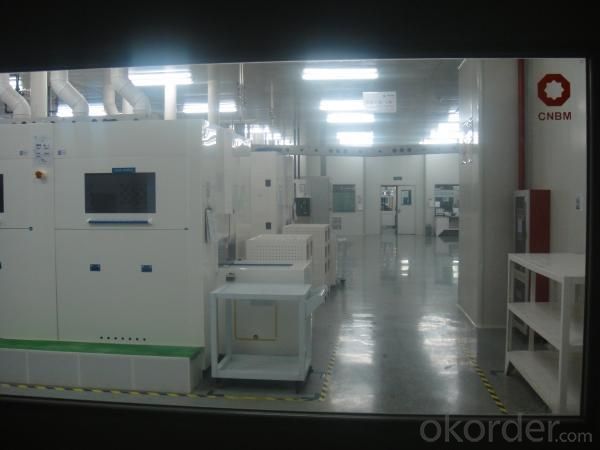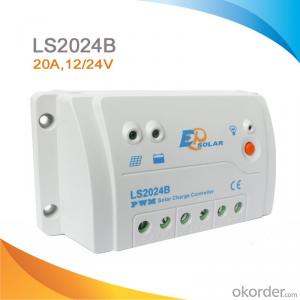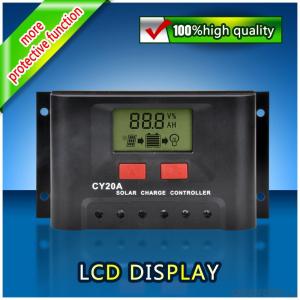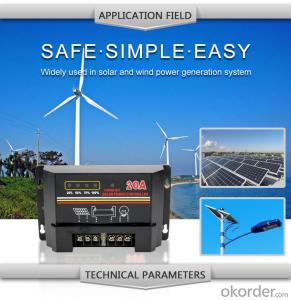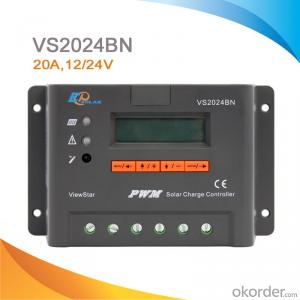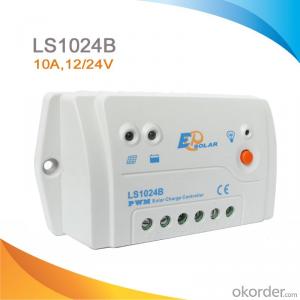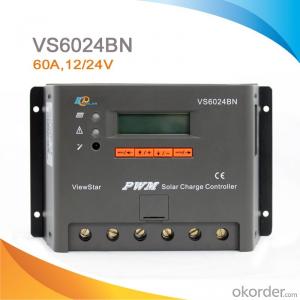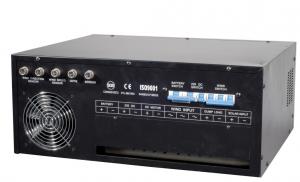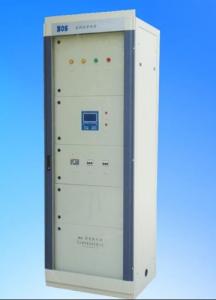20A High Quality Solar Controller with High-Precision Sampling Dot-Matrix LCD Screen
- Loading Port:
- China Main Port
- Payment Terms:
- TT
- Min Order Qty:
- 1 unit unit
- Supply Capability:
- 1000 units per month unit/month
OKorder Service Pledge
OKorder Financial Service
You Might Also Like
Introduction of High Quality Solar Controller VS1024N-3024N
VS1024N-3024N solar controller is our new generation controller for off-grid solar system, such as street light, solar home system or small power station etc.VS1024N-3024N has LCD display, reliable battery charging, full electronic protection, programmable parameters and other features and powerful function.
Our factory is highly recognized by its business partners and clients all over the world and has obtained rapid development under the spirit of win-win .With Solar Controller VS1024N-3024N,We will carry on the mutual beneficial,innovative and revolutionary trading structure as we did before,create value for our employees,share holders and clients and benefit the whole society in our future development.Please contact us ,if you have interest in Solar Controller VS1024N-3024N,don’t hesitate!
Features of High Quality Solar Controller VS1024N-3024N
·Adopt graphics dot-matrix LCD screen and HMI (human-machine interface) with 4 buttons, integrated menu displaying and operation
·32 bit MCU with high speed
·12 bit A/D high-precision sampling to ensure accuracy
·Excellent EMC design
·High efficient Series PWM charging
·Use MOSFET as electronic switch
·Widely used, automatically recognize day/night
·Humanized design of browser interface, undertake every operating conveniently
·Full control parameters setting and modification, diversified load control mode
·Gel, Sealed and Flooded battery type option
Electronic Protections of High Quality Solar Controller VS1024N-3024N
·Overheating
·Over discharging
·Over charging
·Load overload
·Load short circuit
·PV reverse polarity
·Battery reverse polarity
Data Sheet of High Quality Solar Controller VS1024N-3024N | |||
Model | VS1024N | VS2024N | VS3024N |
Rated system voltage | 12/24V auto work | ||
Rated battery current | 10A | 20A | 30A |
Rated load current | 20A | ||
Max.battery voltage | 32V | ||
Self-consumption | <18mA | ||
Charge Circuit Voltage | <=0.26V | ||
Discharge Circuit Voltage Drop | <=0.15V | ||
Communication | TTL232/8 pin RJ45 | ||
Equalize Charging Voltage | Sealed:14.6V;x2/24V Flooded | ||
Temp/compensation | -30mV/℃/12V(25℃) | ||
Working temperature | -35℃~+55℃ | ||
Storage temperature range | -35℃~+80℃ | ||
Humidity | 10%-90% NC | ||
Enclosure | IP 20 | ||
Altitude | <=3000m | ||
Mounting hole size | Φ5 | ||
Weight | 2.05kg | ||
Factory Picture of High Quality Solar Controller VS1024N-3024N
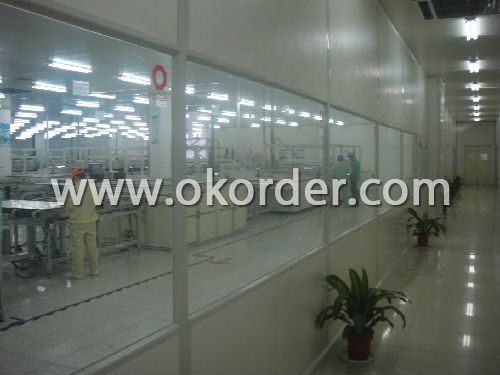
Package Picture of High Quality Solar Controller VS1024N-3024N
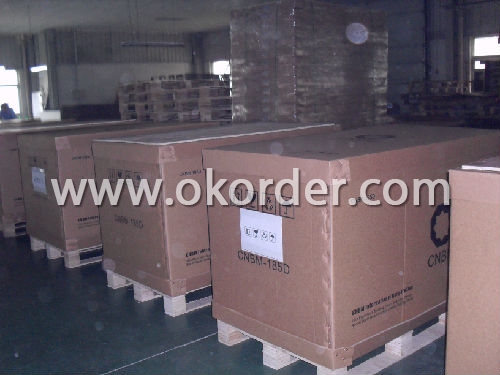
- Q: Some say that the inverter can not directly connected with the controller but the battery, but this inverter has not been in power consumption? If directly connected to the controller, the inverter 12 volts 2000 watts, the controller 12 volt 10 An certainly can not stand ah
- What are your requirements, the inverter is the battery
- Q: What is the maximum temperature range that a solar controller can operate in?
- The maximum temperature range that a solar controller can operate in typically depends on the specific model and manufacturer. However, most solar controllers are designed to withstand temperature ranges between -40°C to 60°C (-40°F to 140°F) without experiencing any significant performance issues. Some high-quality controllers might have an even wider temperature range, allowing them to operate in more extreme climates. It is important to refer to the manufacturer's specifications and guidelines for the specific solar controller being used to ensure optimal performance and longevity in various temperature conditions.
- Q: Can a solar controller be used with MPPT (Maximum Power Point Tracking) technology?
- Yes, a solar controller can be used with MPPT (Maximum Power Point Tracking) technology. In fact, MPPT technology is often incorporated into solar controllers to optimize the power output from solar panels by tracking and adjusting to the maximum power point of the panel. This allows for more efficient energy conversion and increased overall system performance.
- Q: Can a solar controller be used with a solar-powered wireless communication system?
- Yes, a solar controller can definitely be used with a solar-powered wireless communication system. A solar controller is responsible for regulating the power output from solar panels to ensure efficient charging of batteries and protection against overcharging. In the context of a solar-powered wireless communication system, the solar controller would play a crucial role in managing the power supply to the communication devices. By connecting the solar panels to the solar controller, it can optimize the charging process by adjusting the voltage and current levels according to the battery's needs. This helps to maximize the efficiency of the solar panels and ensure that the batteries are charged properly. Moreover, a solar controller also provides important safety features such as preventing overcharging, which could damage the batteries or the communication system. It can also protect against reverse current flow, which can occur during periods of low sunlight or at night when the solar panels are not producing power. Overall, a solar controller is a crucial component in any solar-powered system, including wireless communication systems. It ensures efficient power management, prolongs the lifespan of batteries, and helps maintain reliable communication in remote or off-grid locations.
- Q: How does a solar controller handle battery low voltage recovery?
- The battery low voltage recovery is managed by a solar controller, which constantly monitors the voltage level of the battery bank. When the voltage falls below a specific threshold (typically around 11.5 to 11.8 volts for a 12-volt system), the solar controller commences the recovery process. During this recovery phase, the solar controller eases the burden on the battery bank by disconnecting or reducing power to non-essential loads. This action prevents further depletion of the battery and enables it to recharge more efficiently. In parallel, the solar controller activates the solar panels to initiate the charging of the battery bank. It effectively governs the charging procedure by regulating the amount of current transmitted from the panels to the batteries. By doing so, the controller ensures that the charging current remains within safe boundaries, preventing overcharging and potential damage to the batteries. While the battery voltage gradually increases, the solar controller continuously observes the charging process. Once the battery attains a predetermined voltage level (usually between 13.5 to 14.5 volts for a 12-volt system), the controller switches to a float or maintenance charging mode. In this mode, the controller diminishes the charging current to a lower level, maintaining the battery's full charge while preventing overcharging. To summarize, the solar controller manages the battery low voltage recovery by reducing the load on the battery, activating the solar panels for charging, and overseeing the charging process to restore the battery voltage to a safe and optimal level.
- Q: Can a solar controller be used with solar-powered indoor entertainment systems?
- No, a solar controller is not necessary for solar-powered indoor entertainment systems as they do not require the same level of energy management and regulation as outdoor solar systems.
- Q: How does a solar controller handle variations in battery temperature?
- A solar controller is designed to effectively manage and regulate the charging process of a battery in a solar power system. When it comes to handling variations in battery temperature, a solar controller typically employs a few key mechanisms to ensure optimal charging performance and battery longevity. Firstly, a solar controller monitors the battery temperature using built-in temperature sensors. These sensors measure the ambient temperature or directly sense the battery temperature to determine its current state. By constantly monitoring the temperature, the controller can adjust its charging parameters accordingly. When the battery temperature is too low, the solar controller can activate a temperature compensation feature. This feature adjusts the charging voltage to a higher level, compensating for the reduced battery capacity caused by low temperatures. By increasing the charging voltage, the controller ensures the battery receives a sufficient charge and prevents undercharging. Conversely, when the battery temperature is too high, the solar controller protects the battery from overheating. It achieves this by reducing the charging voltage or current to prevent excessive heat generation. By limiting the charging parameters, the controller prevents the battery from being damaged or experiencing accelerated aging due to high temperatures. Furthermore, some advanced solar controllers may incorporate additional features to handle variations in battery temperature. For instance, they can have an integrated fan or heat sink to dissipate excess heat generated during charging. This helps to maintain the optimal temperature range for the battery and prevent any potential damage. Overall, a solar controller handles variations in battery temperature by closely monitoring it and adjusting the charging parameters accordingly. By compensating for low temperatures and protecting against high temperatures, the controller ensures the battery is charged optimally and maintains its longevity.
- Q: Can a solar controller be used with a solar-powered CCTV system?
- Yes, a solar controller can be used with a solar-powered CCTV system. A solar controller helps to regulate and optimize the charging of the solar panels, ensuring maximum efficiency and safety. It also helps manage the power distribution to the CCTV system, protecting it from overcharging or discharging. Therefore, using a solar controller is essential for maintaining the reliability and longevity of a solar-powered CCTV system.
- Q: How long is the lifespan of a typical solar controller?
- The lifespan of a typical solar controller can vary due to various factors. On an average note, a well-maintained and high-quality solar controller can endure for approximately 10 to 15 years. However, there have been instances where solar controllers have surpassed this timeframe, reaching nearly 20 years or even more. Several factors can impact the durability of a solar controller, such as the brand and quality of the controller, the conditions it operates under, and the level of maintenance and care it receives. Controllers of superior quality from reputable brands generally exhibit better construction and sturdiness, resulting in an extended lifespan. The conditions under which the solar controller operates also greatly influence its longevity. Extreme temperatures, humidity, and exposure to harsh weather conditions can have a detrimental effect on the controller's lifespan. Conversely, controllers installed in regions with milder climates and protected locations tend to have a longer lifespan. Proper maintenance and care play a crucial role in prolonging the lifespan of a solar controller. Regular inspections and cleanings, ensuring adequate ventilation, and safeguarding the controller against excessive moisture or dust can significantly contribute to its overall lifespan. It is equally important to adhere to the manufacturer's maintenance guidelines and avoid overloading the controller beyond its rated capacity. In conclusion, although the average lifespan of a solar controller is typically around 10 to 15 years, various factors can influence its longevity. By investing in a high-quality controller, providing suitable operating conditions, and practicing regular maintenance, it is possible to extend the lifespan and optimize the efficiency of a solar controller.
- Q: Can a solar controller be used in a hybrid solar power system?
- Yes, a solar controller can be used in a hybrid solar power system. A solar controller, also known as a charge controller, is an essential component in any solar power system, including hybrid systems. Its main function is to regulate the flow of electricity between the solar panels and the batteries. In a hybrid solar power system, the solar panels are not the sole source of power generation. They are combined with other energy sources, such as a backup generator or grid power. The solar controller plays a crucial role in managing the charging and discharging of the batteries, regardless of the energy source. The solar controller ensures that the batteries are charged optimally and prevents overcharging or deep discharging, which can damage the batteries. It also helps maintain a stable voltage and current output from the solar panels, which is essential for the efficient operation of the hybrid system. Furthermore, a solar controller can incorporate advanced features and technologies, such as Maximum Power Point Tracking (MPPT) or Pulse Width Modulation (PWM), to maximize the energy harvest from the solar panels. These features are beneficial in both standalone solar systems and hybrid systems. In conclusion, a solar controller is a vital component in a hybrid solar power system, as it regulates the flow of electricity and ensures the optimal charging and discharging of the batteries, regardless of the energy source being used.
1. Manufacturer Overview
| Location | Shenzhen,China |
| Year Established | 2009 |
| Annual Output Value | Above US$12 Million |
| Main Markets | Europe;North America;Afirca |
| Company Certifications | ISO 9001:2008;CQC;CE |
2. Manufacturer Certificates
| a) Certification Name | |
| Range | |
| Reference | |
| Validity Period |
3. Manufacturer Capability
| a) Trade Capacity | |
| Nearest Port | Shenzhen,China |
| Export Percentage | 0.6 |
| No.of Employees in Trade Department | 46 People |
| Language Spoken: | English;Chinese;Spanish |
| b) Factory Information | |
| Factory Size: | Above 300,00 square meters |
| No. of Production Lines | Above 4 |
| Contract Manufacturing | OEM Service Offered;Design Service Offered |
| Product Price Range | Average |
Send your message to us
20A High Quality Solar Controller with High-Precision Sampling Dot-Matrix LCD Screen
- Loading Port:
- China Main Port
- Payment Terms:
- TT
- Min Order Qty:
- 1 unit unit
- Supply Capability:
- 1000 units per month unit/month
OKorder Service Pledge
OKorder Financial Service
Similar products
Hot products
Hot Searches
Related keywords




